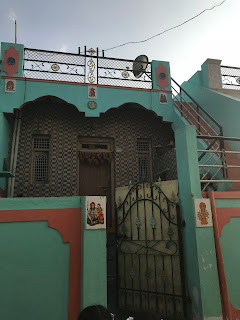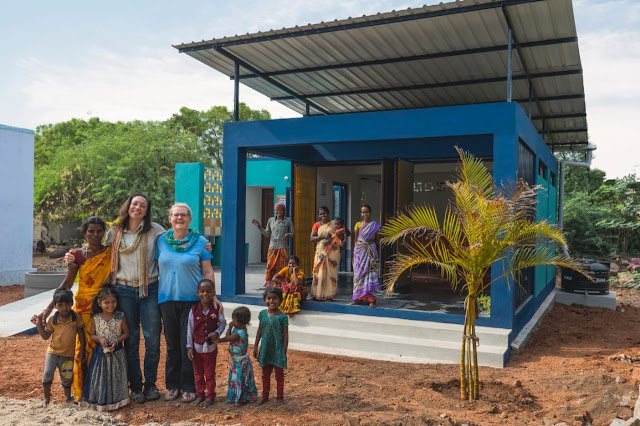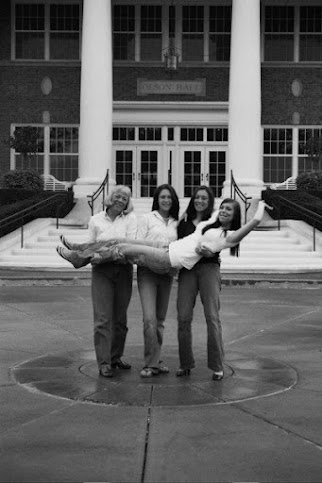BUILDINGS CAN TALK; PLEASE LISTEN
"Architecture belongs to culture, not to civilisation." - Alvar Aalto
As architects we learn by drawing, analysing and interpreting
famous architects that have been deemed the best of the best. Our own style and preference of how a
building should look develops through this initial lens we are taught to look through, along with 5+ years of soul-destroying
panels of architectural critics. Some
architects end up creating a style that they use everywhere no matter what the
building context, building methodologies available, society, or culture. I disagree
with this method of architectural design development. It is why Alvar Aalto became my favourite –
he does not have a clearly definable style.
His design responses are contextual and culturally appropriate. He was also known for doing a considerable
amount of pro bono work.
If you haven't heard of Aalto - check him out: https://www.alvaraalto.fi/en/information/alvar-aalto/
It is natural for any human, and any animal for that matter,
to complete a task or project with the path of least resistance; maybe that’s
why some create their own style or repeat designs from previous projects. As someone who loves change and embraces it with positivism
I find it hard to develop a specific style that applies to each project because of previously discussed ideas in an earlier post Generosity and the Ghost (https://awolarchitect.blogspot.com/2018/11/generosity-and-ghost.html). It also has to do with the fact that I am usually working in a culture
that is not of my origin – so I choose to act more as a sponge, soaking
up all I see, and considering how these elements could be applied to the building/project I am
working on rather than believing my preferred design style is what’s most
appropriate for use in a different country, different culture, and different
context all together. This includes setting aside my personal architectural and design beliefs, opinions on construction details, sustainability, and project management so that I can understand and empathise with a different way of developing the built form.
Just as cultures have their own language so too do the buildings
located within each culture’s-built environment. And I believe we should not be forcing our
preferred design aesthetic and architectural methodologies on to any group of
end users who experience space differently and who have innate aesthetic and
aspirational preferences that will likely be very different than my own. This to me is no different than a vegan trying
to tell a small village in Papua New Guinea they should stop eating meat or a
missionary going to a village and trying to convert them to an entirely new religion. And for some of you reading this, you will
disagree, but we will have to agree to disagree in this instance because in my opinion
it’s a form of hegemony. Hegemony, “is the
social, cultural, ideological, or economic influence exerted by a dominant
group,” (www.meriam-webster.com). If you disagree you might want to consider elements of why you disagree and relfect on if it may stem from a sense of entitlement as well. As I say to my friends, and myself , when I have acted in a way that assumes my way of going about things is 'correct' - "Your entitlement is showing."
So, you might be wondering what is the language of buildings here in Anantapur, Andre Pradesh, India? The first thing that comes to mind is COLOUR!
So many colours first and foremost. Then
individuality. Each house, each building, and
even each gate is aesthetically different from the one next to it! The form and basic planning of houses and other building types have a consistency that is a result of years
of building with Vaastu principles and materials available. Vaastu principles have been applied for orientation and general layout
requirements and are Hindu architectural principles. Each façade is incredibly
different and have been completed in each building owner’s aesthetic preference. This results in an extremely dynamic tapestry
of buildings that sparkle and shine in their own right as we drive quickly by
in a rickshaw – each one seems to be trying to out do the other and express an
opinion of what is the most beautiful house or building.
It’s absolutely fascinating, and could be
described as garish, and possibly sublime, in the same way that the Baroque Rococo period embellishes with
fervour. Houses here really are comparable
to sarees – in the same way each woman adorns a beautiful display of ornate fabric design
across her body. Some, sparkle and force
your gaze with their neon colours and swarovski crystals. Others catch soft light in a way that makes
the wearer immensely angelic. And then
there are the intricate patterns that make you come closer for further
inspection and admiration of the craftwork and patience involved. So, too are the homes and buildings around
Adnre Pradesh – full of individual expression they are beautiful in their own
right.
My photos do not do this place justice, but they will give you
a brief glimpse of moments when I took the time to quickly capture how buildings speak
of their users in the district of Anantapur.














Comments
Post a Comment